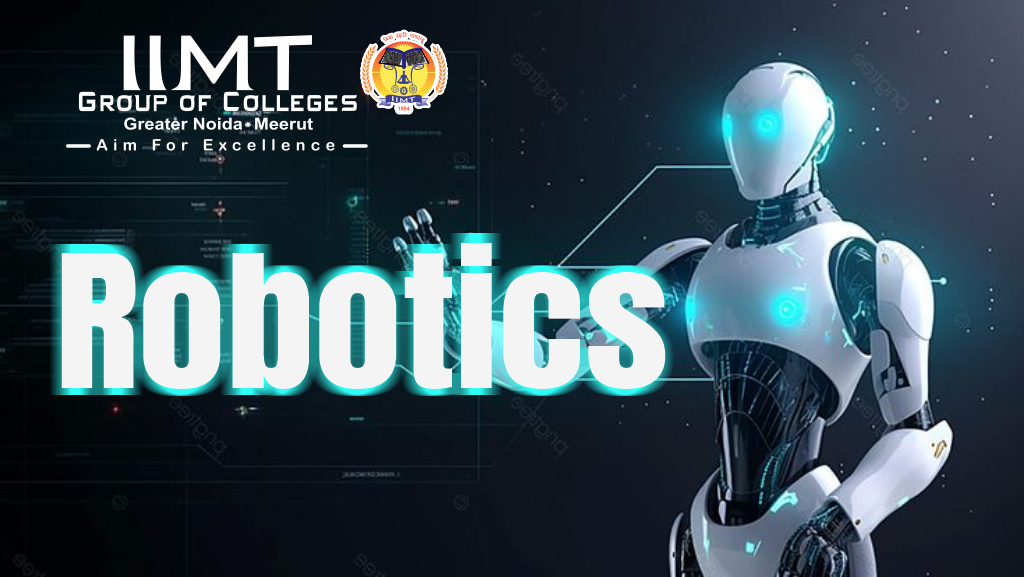Robotics: The Future of Automation and Innovation
 IImt College
IImt College
Robotics is a multidisciplinary field at the intersection of engineering, computer science, and artificial intelligence (AI), focusing on the design, construction, and operation of robots. Robots are programmable machines capable of carrying out tasks autonomously or semi-autonomously, often replicating human actions or surpassing human capabilities in specific domains. From industrial automation to healthcare and entertainment, robotics has revolutionized how we interact with the world.
What is Robotics?
Robotics encompasses the development of intelligent systems that can sense, process, and act within their environment. It involves several components, including mechanical structures, sensors, actuators, control systems, and software algorithms. Robots are not limited to humanoid designs; they include a wide variety of forms such as drones, robotic arms, autonomous vehicles, and robotic pets.
Components of a Robot
Mechanical System:
This forms the physical structure of the robot, including the frame, joints, and actuators. The mechanical design determines the robot's range of motion and the types of tasks it can perform.Sensors:
Sensors gather information about the robot’s environment, such as temperature, pressure, light, sound, and proximity. Common sensors include cameras, gyroscopes, ultrasonic sensors, and infrared detectors.Actuators:
Actuators are components that convert electrical signals into physical motion. Examples include motors, hydraulic systems, and pneumatic systems.Control System:
The control system acts as the brain of the robot, processing data from sensors and issuing commands to actuators. Control systems can range from simple microcontrollers to complex AI-driven algorithms.Power Supply:
Robots require energy to function, which can come from batteries, solar panels, or tethered power sources, depending on the application.Software and Programming:
Software enables robots to perform tasks autonomously or in response to human commands. Programming languages like Python, C++, and MATLAB are commonly used to develop robotic applications.
Applications of Robotics
Robotics has become a cornerstone of various industries, providing innovative solutions and increasing efficiency:
Industrial Automation:
Robots are extensively used in manufacturing for tasks such as welding, painting, assembling, and packaging. Robotic arms, guided by precise algorithms, enhance productivity and reduce human error.Healthcare:
In medicine, robots assist in surgeries, rehabilitation, diagnostics, and patient care. Surgical robots like the da Vinci system provide precision and minimally invasive procedures.Agriculture:
Robots equipped with sensors and AI are transforming farming by automating tasks like planting, harvesting, and monitoring crop health.Transportation:
Autonomous vehicles, including self-driving cars and drones, rely on robotics for navigation, obstacle avoidance, and decision-making.Space Exploration:
Robots like NASA’s Mars rovers and robotic arms on space stations play a crucial role in exploring harsh environments beyond human reach.Entertainment and Education:
Robots are increasingly used in interactive exhibits, movies, gaming, and educational tools to engage and inspire audiences.
Challenges and Future Trends
While robotics has achieved remarkable progress, challenges remain. These include ensuring safety, enhancing adaptability in unstructured environments, managing costs, and addressing ethical concerns about job displacement and AI misuse. Moreover, developing robots that mimic human dexterity and decision-making is still a significant hurdle.
The future of robotics is poised for exciting advancements. Emerging technologies like AI, machine learning, 5G connectivity, and edge computing are making robots smarter and more autonomous. Collaborative robots (cobots) are designed to work alongside humans, enhancing productivity in shared workspaces. Additionally, the integration of robotics with the Internet of Things (IoT) is enabling connected ecosystems where robots communicate and coordinate seamlessly.
Candidates interested in innovation and advancements, pursuing an artificial intelligence College in Noida is an exciting and forward-thinking alternative.
Robotics continues to push the boundaries of innovation, transforming industries and reshaping our daily lives. As technology evolves, the potential of robotics to create safer, more efficient, and sustainable systems is limitless.
Subscribe to my newsletter
Read articles from IImt College directly inside your inbox. Subscribe to the newsletter, and don't miss out.
Written by
